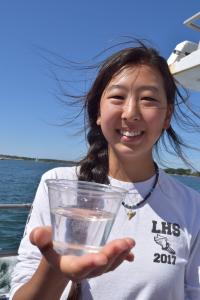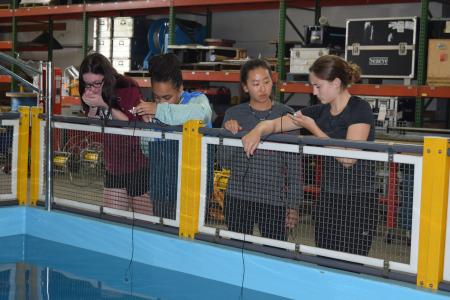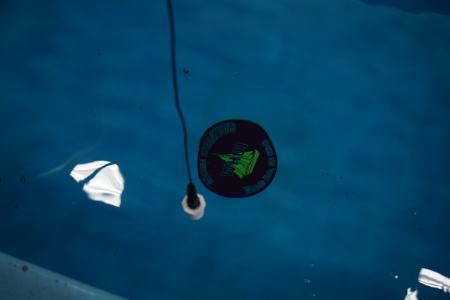My Story: Girls in Science
By Eugena Choi, Girls in Science Fellow 2019
In August, Eugena joined nine other high schoolers in Woods Hole, Massachusetts to take part in the Earthwatch Girls in Science Fellowship Program. Eugena shares her journey with science and what has motivated her to keep pursuing her path even when the way through hasn’t seemed very clear.
I’ll be honest, I’m not a unique person.
I haven’t made any significant scientific discoveries and I haven’t gotten accepted into any Ivy League schools (well, I haven’t applied yet, but still!). I didn’t grow up in a less fortunate country, where I had to work hard to feed my family and make an innovative invention like in one of my favorite books, “The Boy Who Harnessed the Wind” by William Kamkwamba. He was born in a village called Masitala in Malawi and grew up alongside his six sisters helping his father with his family’s farm.
I remember reading about all the hardships he faced growing up; he wasn’t able to go to school for five years because his family simply couldn’t afford to pay for his education. That made me think about how lucky I am to live here in the United States, where most of our education is free and we don’t have to go to school with empty stomachs. This is the reality William and many of his peers had to face. In his book, he talks about his family dog and how over time, as famine and sickness washed up on the arid beaches of rural Malawi, his dog grew thinner and more emaciated with each passing month. William would even feed him some of his scraps, but when the dog finally died, I remember putting down my book and spending a good 10 minutes just sobbing. I could feel his sadness from the pages of my book and I think I went through a whole pint of ice cream in efforts to console myself afterward.
The people of his village were dying of starvation and disease by the masses and no one could grow their crops. But William never gave up. And that’s what I think the most important lesson is to carry. He never put his pencil down and kept trying to further his education by reading books about subjects he could barely even understand at a “small community lending library located at his former primary school.” He borrowed an “8th-grade American textbook, ‘Using Energy,’ which depicted wind turbines on its cover,” and through looking at the pictures, he slowly but surely understood what the book was talking about. When he saw the picture of huge windmills spinning in serene landscapes in foreign countries, similar to the ones scattered around Cape Cod, he had the idea to build one of his own. His windmill would eliminate the need for kerosene, which produced a lot of pollution and was inefficient.
Through much trial and error, he built his own working windmill that supplied electricity to his home. Soon after, he got the attention of a woman working for TEDGlobal and got his own dream made into a reality. He was invited to a TED conference to tell his story, much like the ones we watched during the week and got to finally continue his education at Dartmouth! It was a long time coming for him but in the end, through his hard work and extreme amount of dedication, William made it. This is something I really admire about him and envy at times too.
Okay, enough about William, although I could talk about him for hours. Here’s my story. Unlike William, I definitely didn’t have a difficult life growing up. I spent a relatively peaceful childhood in Longmeadow (a town that has 15,000 people and not nearly enough to do). My childhood was spent playing with my two younger sisters, taking trips to Vermont and the Cape every year, and reading every book I could get my hands on at my town’s library. Like, I read a lot. One time, I remember reading a book in this series for six hours straight, no bathroom or food breaks. And then that same night, I fell asleep with the book having fallen onto my face, woke up at 3 a.m. only to pick it up and finish it that morning. I read books of every genre, but I think my favorite was, and still is today, science. Nonfiction to be exact. I loved reading about ancient civilizations, bog mummies, dinosaur fossils, black holes, you name it. That was probably my first introduction to science and my first step down my path, and I became one step closer to catching up to where I am now.
I’d like to think I’m sprinting along without a care in the world, knowing exactly what I want to do with my life and how I want to go about it, but the reality is: I’m not. It’s more like I’m holding a map that doesn’t have anything on it and trying to find my way around. To be completely honest, I have no idea what I want to do with my career. I know I like science and I enjoy learning about it but at times, I find myself questioning my abilities. Am I good enough to do research? Smart enough? Reliable enough? Worthy enough? And it hurts because I feel as though that light at the end of the tunnel is slowly fading away and diminishing as I reach out to grab it. But in that stretch of darkness, Earthwatch’s Girls in Science fellowship, in short, saved me. It’s like I was struggling to keep my head above water and someone lent me a hand and pulled me to shore.
Junior year was a struggle to say the least. I took a lot of AP courses, struggled in math, and had to study for AP exams, SATs, ACTs, and balance my extracurriculars all at the same time. It seemed as if all hope was lost for me. However, halfway through the year, my AP Environmental teacher suddenly called me over and showed me something on her screen. It was the Earthwatch website and she told me about a program she found called “Girls in Science.” She told me I should consider applying and that night, I took one look at the program on my laptop and told my parents that I was going. I spent the next three months working on my application and perfecting it to be sent in. When I pressed the submit button, I felt like a balloon about to pop. Now all that was left was to play the waiting game.
Those next few months waiting for the fateful “Congratulations! You have been awarded an Earthwatch Girls in Science Student Fellowship” email was a hard few months to say the least. I spent them cramming for SATs, pulling sleepless nights doing homework, and not getting a captain’s spot for softball. I came home from my banquet, slipped off my shoes, and simply told my mom that I was quitting. When I finally did get the email, I remember jumping out of my seat and running into the kitchen to tell my family. My future suddenly wasn’t looking so bleak anymore. Fast forward to the morning of August 10th. I woke up at the bright and early time of 9 a.m., ate breakfast, changed, and spent the next hour waiting for my mom to get ready. She takes forever and always has to run back into the house because she forgets her phone.
The whole car ride I remember not being nervous, which is unusual for me since I get the jitters for even the tiniest thing. Thinking back now, though, I think I self-consciously knew that this program is part of my destiny and that this was meant to happen, I just didn’t know it at the time. Every step I took here at the Woods Hole Oceanographic Institution, big or small, is leading me further down my path. I took huge leaps when all of the women scientists came and talked to us, bounded when we made and tested our hydrophones, sprinted along when we worked on the spectrograms, jumped for joy when we did all of those cool experiments on the boat and got to see all the ocean critters, and then dipped my feet into all of the paths of my fellow teammates!
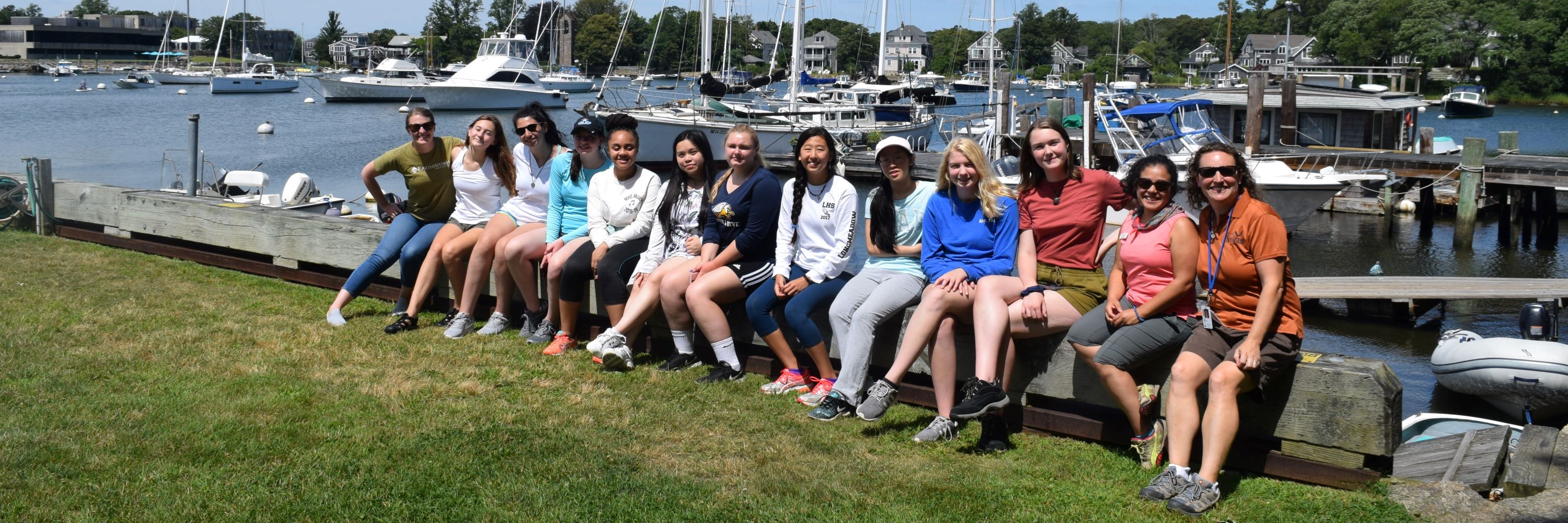
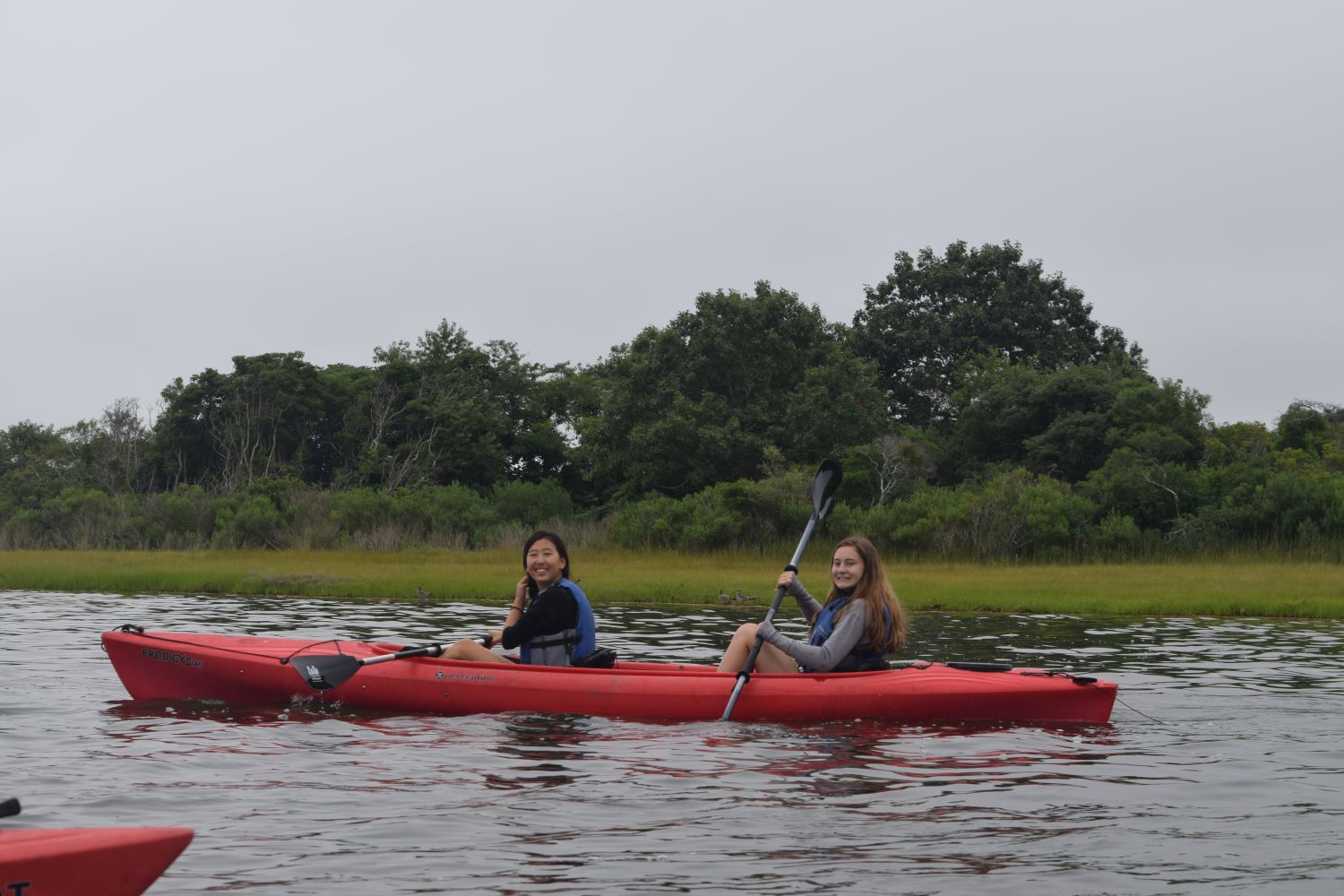

But all paths lead somewhere, and so on Saturday, August 17th, 2019, is when I left the joint path we were on during the fellowship and stepped back onto mine. I’m really sad to have left, but staying at Woods Hole Sea Grant has taught me so much about the world around me, and the Earthwatch fellowship gave me the opportunity to meet new people and discover parts about myself that I didn’t know even existed. I can’t thank everyone enough who helped run this program, especially our lovely Sarai, Anna, Grace, and Laela. I’m so honored to have been apart of the Girls in Science fellowship and I can’t wait to share what I’ve learned with others in my community and teach them the value of the world we live in.
I think of stories as individual fibers weaving together to create a giant web. They can interact with each other, weave together to converge into one story, or separate and drift apart. I believe stories are ever-changing and can transform depending on what you decide to do. After all, it’s your story and your life. Although my story isn’t as incredible as some of the stories we heard over the week, I want to contribute to something bigger. Like Josie said, a lot of small things add up and make a huge difference.
I want to end by quoting author Les Brown:
Accept responsibility for your life. Know that it is you who will get you where you want to go, no one else.
Visit our website to learn more about the Earthwatch Girls in Science Fellowship and check out Dominique Thomas’ blog post “Reflections on Women in STEM” for another perspective on the fellowship.
Sign up for the Earthwatch Newsletter
Be the first to know about new expeditions, stories from the field, and exciting Earthwatch news.
